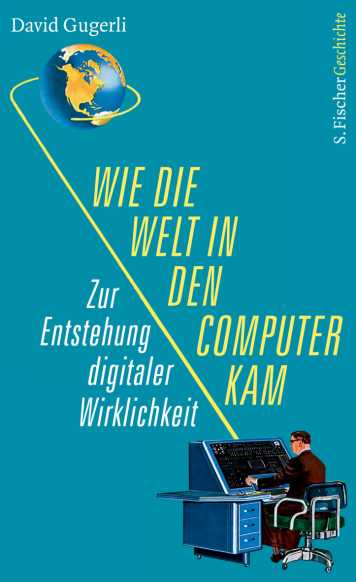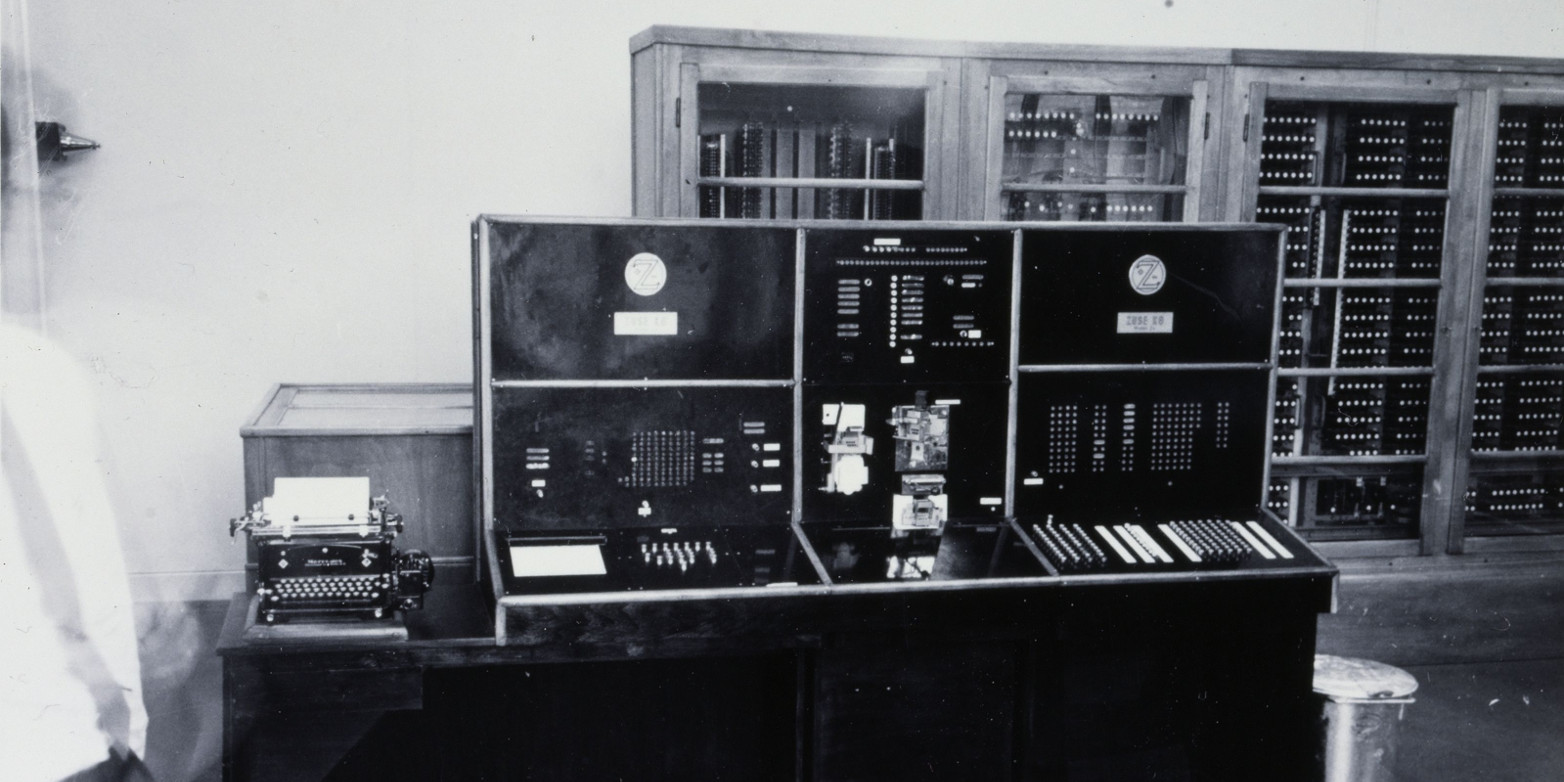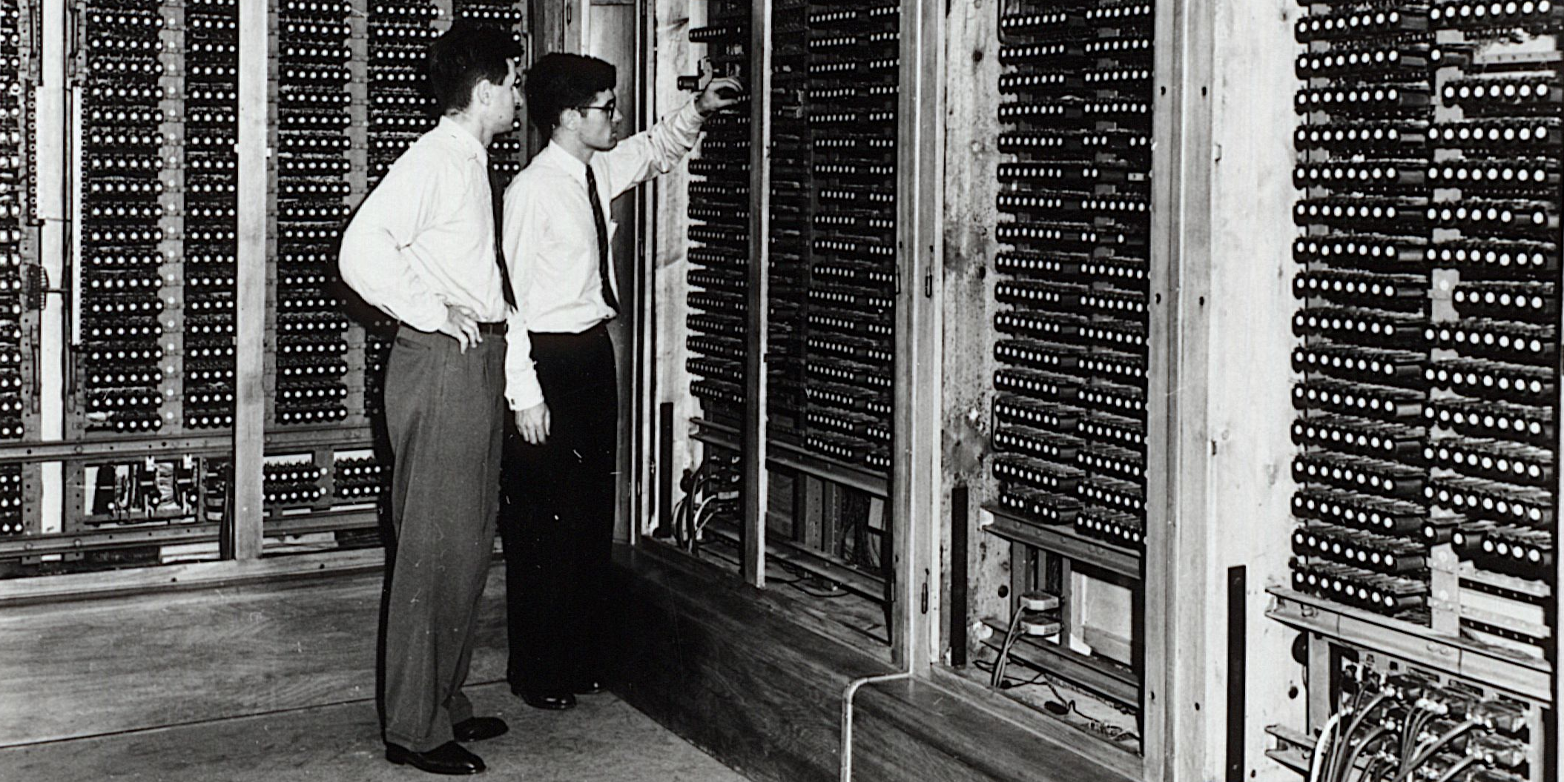How the world came to be in the computer
For the world to be managed and organised using computers, it has to follow the digital logic of machines. Historian David Gugerli tells the story of this thrilling process of adaptation with a marvellously entertaining flair.
Ausschalten (Switch off) is the heading of the last chapter in David Gugerli’s newly published book, which traces the history of the computer through the engineers (the vast majority of which, incidentally, are male) and the users of their machines and programs. In that respect, the book ultimately revolves around all of us.
These days we are online all the time, watching the latest news, sending emails, uploading posts, planning trips and checking the weather forecast. Anyone interested in the developments that have made computers an integral part of our daily lives over the last 70 years should take the last chapter’s heading to heart by switching off their smartphone and yielding to Gugerli’s narrative exuberance – starting with chapter one: Einschalten (Switch on).
Nimble treatment of a heavyweight topic
David Gugerli has taken on a major theme: nothing less than the emergence of digital reality. But nowhere in the book by the professor of technological history at ETH Zurich will you find him delivering a lecture – quite the opposite: the essayistic style of the writing with its ironically distanced tone finds resonance with the reader and creates an easy – and very pleasant – summer read. Using official publications, assessments and forecasts by contemporary protagonists – and occasionally their retrospective revisions of history – the author’s 200-page narrative describes what it takes for a new technology to prevail. A technology which, in this case, has captured the very essence of our society and continues to wreak change in it. Notwithstanding the relaxed style, the 20 pages or so of annotations and 25-page bibliography underline the rigour of the work.
Sorting and calculating
The story begins with the mainframe computers of the 1950s, when Remington Rand presented the UNIVAC. That said, it actually begins with the question of what a computer is: “Even those who were building them were unable to agree on what constituted the essential characteristics of a computer,” writes Gugerli. Everyone agrees on the high-speed arithmetic benefits of computers. So it is all the more surprising that the film advertising the UNIVAC never stressed the process, only the result. “The process had already vanished into the black box of the machine,” notes a stunned Gugerli, who points out that the French word for computer is still “ordinateur”, a term that emphasises the sorting and classification of information – activities that precede the actual arithmetic process and which were the first to be carried out by a computer.
Overcoming resistance
The focus of Gugerli’s narrative is not so much the machines, but the question as to what it took to use them: the people who had to prepare the jobs in such a way as to make the fast calculating machines able to work. For instance, he describes the experiences of Eduard Stiefel, a Professor of Applied Mathematics and a computing pioneer in the early 1950s. He and his group at ETH Zurich operated Konrad Zuse’s “Z4” and found that the preparation typically took far more time and mental effort than carrying out the one-off calculations manually. Stiefel postulated that creating a library of standard programs could allow the machines to be used without so much preparation. He considered the work of programming boring.
Gugerli provides many such examples to demonstrate the resistance that needed to be overcome and the discussions that had to be held before the new machines could be used efficiently. He illustrates the huge organisational efforts that were required, the way that companies adapted their work processes, and how, in the nascent days of computing, rules were agreed that facilitated the sharing of the scarce mainframe infrastructure. Particularly strikingly, he describes the complex technical and organisational interplay involved, using the American space agency NASA’s Mission Control Center in Houston by way of example.
New industries, new professions
Gugerli describes the emergence of new groups of professions, such as programmers and operators, some of which then disappeared again on the back of subsequent technological advances. We as readers become aware of how quickly the IT sector has developed and how fundamentally it has changed our lives and our work. In the course of the book, the author traces the emergence of the software industry, operating systems, the birth of the first personal computer, and finally the World Wide Web – all prerequisites for the smart digital devices we rely on today.
The book’s title Wie die Welt in den Computer kam (roughly translatable as “How the world came to be in the computer”) suggests where Gugerli’s interests lie: the decisions and adaptations in the real world that are required to make the latter a digital reality. As a consequence, the book ends where “systems (...) are becoming so complex that the interaction of their components cannot be installed, configured, optimised, maintained or assembled, even by highly specialised experts”. In other words, at the point where decisions are delegated from humans to the computer. Where we are today.
About the person
David Gugerli, born 1961, studied history and literature. After completing his doctorate in history and various sojourns abroad, he obtained his habilitation at the University of Zurich in 1995. Gugerli was appointed Assistant Professor at ETH Zurich in 1997, where he has been Full Professor of Technological History since 2001.

David Gugerli
Wie die Welt in den Computer kam. Zur Entstehung digitaler Wirklichkeit.
Verlag S. Fischer (publisher), Frankfurt am Main 2018, 256 pages, CHF 39.90


